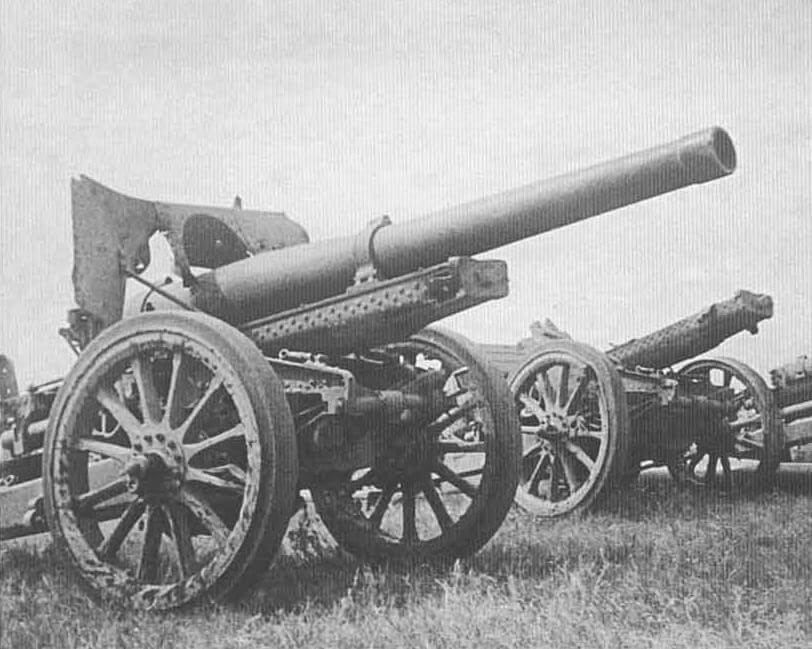
| Year | 1937 |
| Weapon Type | Heavy Howitzer |
| Origin & Designer | Japan/Osaka Arsenal |
| Numbers Produced | 440 |
| Crew | 10 |
| Calibre | 149.1mm |
| Elevation | -5° to +65° |
| Traverse | 30° |
| Breech | Interrupted Screw |
| Recoil | Hydropneumatic |
| Gun Sight | Panoramic |
| Gun Mount | [@gun_mounts] |
| Carriage | Split Trail |
| Trailers | [@trailers] |
| Gun Shield | 4mm |
| Armoured Plate | [@armoured_plate] |
| Barrel Length | 3.523mm (L/23.5) |
| Overall Length | 6.71m |
| Width | 1.65m |
| Height | 2.07m |
| Weight | Weight in Traction: 4.920 kg Weight in Action: 4.140 kg |
| Round Weight | 31.3 kg (HE) |
| Muzzle Velocity | 540 m/s |
| Feed | [@feed] |
| Magazine Capacity | [@magazine_capacity] |
| Practical Rate of Fire | [@practical_rate_of_fire] |
| Rate of Fire | 8 r.p.m. |
| Maximum Rate of Fire | [@maximum_rate_of_fire] |
| Maximum Ceiling | [@maximum_ceiling] |
| Maximum Ground Range | [@maximum_ground_range] |
| Maximum Range | 11.900m |
| Armour Penetration | [@armour_penetration] |
| Traction | Horse Drawn (Two Loads) or Motorised (Tractor) |
| Variants | [@variants] |
| Notes | The type 96 was a considered as the best heavy howitzer ever built by Japan. It was robust and had a longer range than the two older models, which it was built to replace. Although it never really replaced the type 38 and type 4, it was still regarded as the standard IJA heavy howitzer and saw action on every front and served until the end of World War Two. |